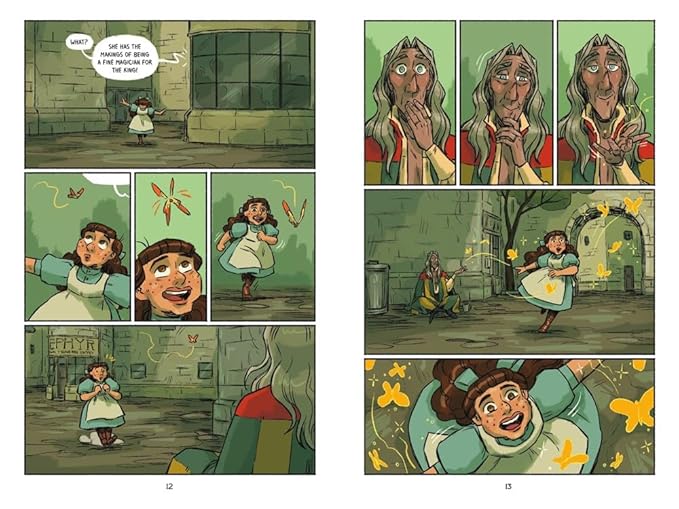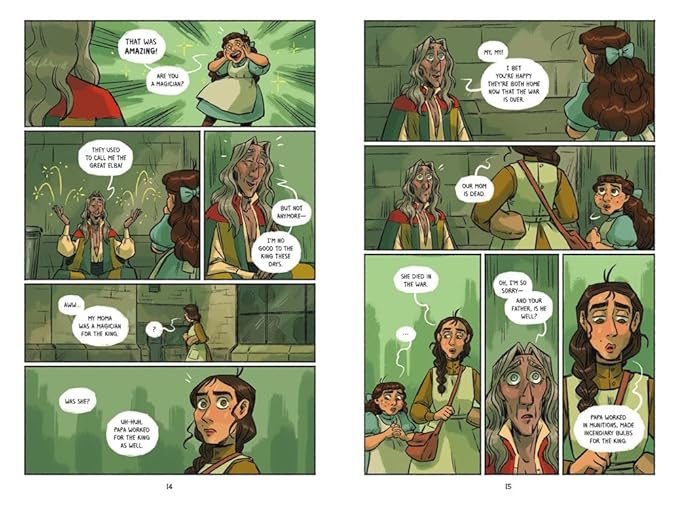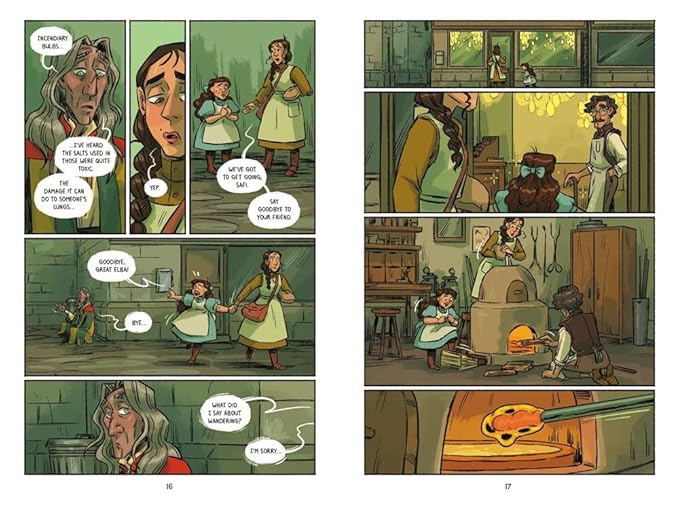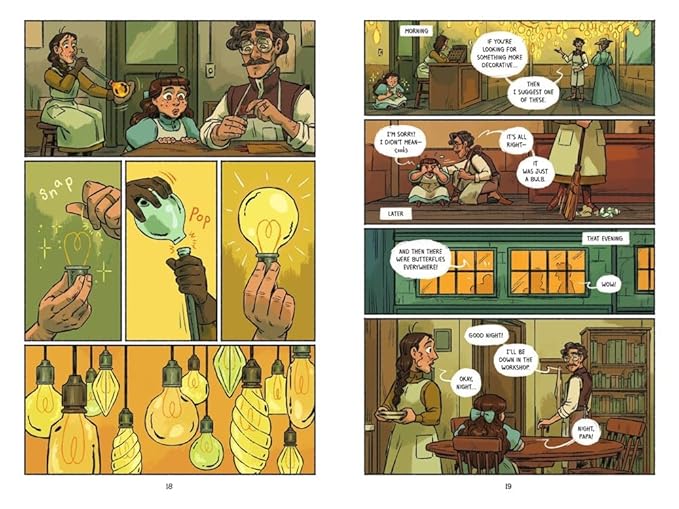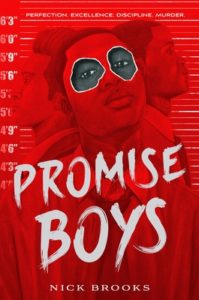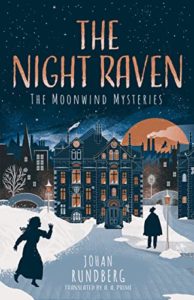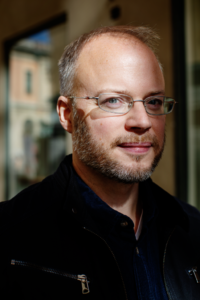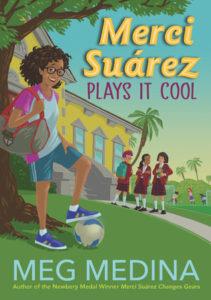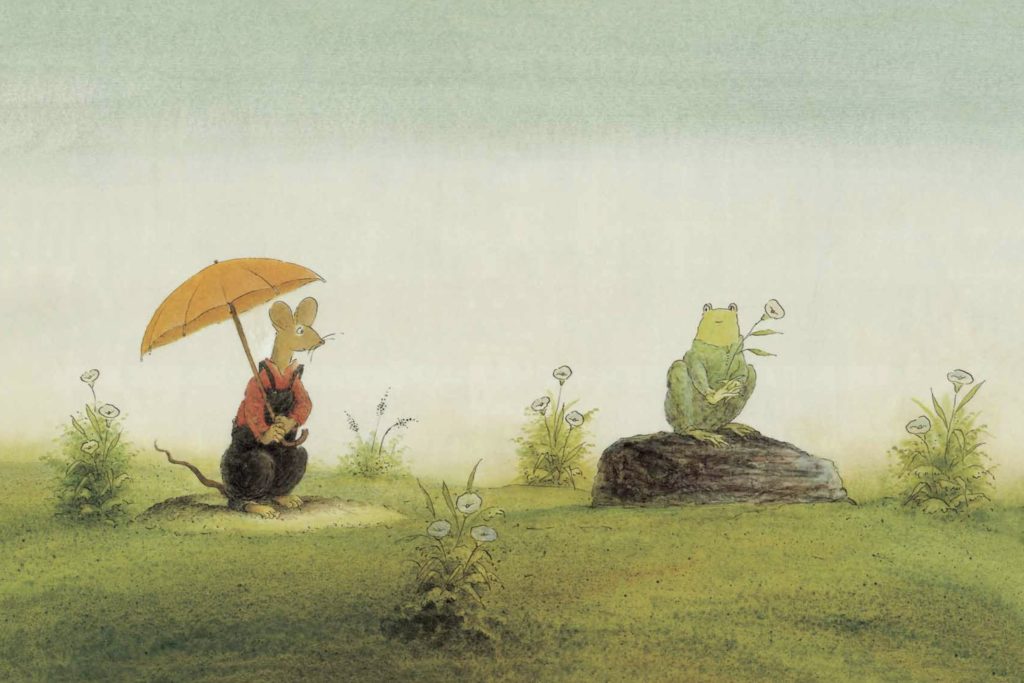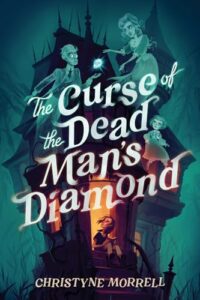
The Curse of the Dead Man’s Diamond
Author: Christyne Morrell
Published September 17th, 2024 by Delacorte Press
Summary: In this middle-grade mystery, eleven year old Charlie moves from NYC to Florida only to find herself in the haunted Winklevoss Manor. To her surprise, she’s not alone—she’s joined by three mischievous ghosts cursed for snatching a dead man’s diamond.
After twelve-year-old Charlie moves from New York City to sweaty, sticky Florida, she’ll do anything to get back home. Even if it involves ghosts. Winklevoss Manor, Charlie’s new house, is a towering Victorian mansion famous for one thing—it’s haunted. Three ghosts—Ada, Arthur, and Guff—live there, and not by choice. They’re trapped, cursed for stealing a dead man’s diamond. A diamond that, just like the ghosts, is still in the house. And this gets Charlie thinking. . . Maybe if she can find the diamond and sell it, Charlie’s family could have enough money to move back to the city. But lifting the curse isn’t that simple, especially when she’s pitted against the school bully and three unruly spirits. It’s frightening to think about, but what if the only way to get rid of the ghosts and curses is by doing what Charlie fears the most—confronting the past that haunts her?
Praise:
A fun haunted house story full of mystery and heart!”—Lindsay Currie, New York Times bestselling author of The Mystery of Locked Rooms
“Spooky, fun, just a little scary, and full of heart.”—Delilah S. Dawson, New York Times bestselling author of Mine and Camp Scare
“The Curse of the Dead Man’s Diamond is the perfect blend of mystery, treasure hunt, colorful ghost characters, and Florida haunted house setting.”—Fleur Bradley, award-winning author of Daybreak on Raven Island and Midnight at the Barclay Hotel
“A spirited mystery brimming with heart and souls.”—Jan Eldredge, author of Nimbus and Evangeline of the Bayou
“Ghosts get equal billing with the living in this sweet tale about finding home.” —Kirkus Reviews
About the Author: Christyne’s earliest completed work, written at age 7, told the story of Kermit the Frog meeting Miss Piggy’s parents for the first time. Kermit the Hog was a cautionary tale about pretending to be something you’re not. She still thinks it has potential.
Today, Christyne writes middle-grade novels across a number of genres. Whether they take place in quirky seaside towns or fantastical, faraway kingdoms, her stories all have one thing in common: clever kids accomplishing extraordinary things, like conquering a curse, overthrowing a king, or taking down an evil, brain-hacking corporation. Christyne believes that middle-grade books should challenge, intrigue, and inspire young readers – but above all, never underestimate them.
Christyne is the author of the middle-grade novels Kingdom of Secrets and Trex, which was named an Eleanor Cameron Notable Book for Excellence in Science Fiction and was included on the 2024 Sequoyah Masterlist. Her third novel, THE CURSE OF THE DEAD MAN’S DIAMOND, comes out Fall 2024. Christyne is also the author of the poetry book, The Fool Catcher (2021), and the picture book, Abra, Cadabra & Bob (2019), and her poems and stories have appeared in Highlights, Spider, and The School Magazine.
When Christyne isn’t writing for kids, she works as an attorney. She enjoys reading, baking, and watching home improvement shows. She lives with her husband, daughter, and beagle in Decatur, Georgia.
Review: Too often, I find that ghost stories are predictable and remixes of past tales which make them seem interchangeable; however, Morrell’s ghost story is as unique as her other books, Kingdom of Secrets and Trex. There was much that drew me in: I loved that there were chapters from the ghost’s point of view; I loved that it was more than just a mystery, it was a story of finding home and family; I loved that Charlie is never what is expected; I loved the setting and how it was a character in the story; and I loved how the book hits on so many different emotions, from grief to love. The story is fast-paced and everything comes together in a satisfying way–truly a fun, good read.
Discussion Questions:
- Why is Charlie’s dad so different in Florida?
- How was Charlie being selfish for much of the book?
- Why do you think it was important to have chapters from the ghost’s point of view?
- Do you think someone can change?
- Why is setting so important to this story?
- The bullying subplot wasn’t cleared up completely. What do you think happens next?
- Did the ending surprise you?
Flagged Passage: Chapter 1
My cheek was smashed so firmly against the cool car window that it peeled off like a Fruit Roll-Up when I lifted my head. Rachmaninoff’s Piano Concerto no. 2 was still blaring in my earbuds, as it had been ever since we’d stopped for gas two hours ago. As I cracked my eyes open, Dad came into focus, his body twisted around awkwardly in the driver’s seat. He smiled at me, but it wasn’t his usual smile. It was his pretending-everything-is-great-when-everything-clearly-isn’t-great smile. Which I’d come to know well.
Our car was no longer moving. We had arrived. “Welcome home, Charlie!” said Dad, too cheerfully.
I gazed past him at the bizarre color of the sky–a heavy grayish-blue–then rubbed my eyes, wondering how I could’ve slept so long. It took my foggy brain a few seconds to realize that it wasn’t actually nighttime. Those were storm clouds overhead, blocking out the sun. They churned like a wild animal trying to claw its way out of a sack. How appropriate.
But even worse than the angry sky was the house outlined against it, stark black against the ashy gray. Winklevoss Manor–that’s right, our new home had a name–was a towering Victorian mansion, crisscrossed with so many thick vines it looked like clutching fingers were trying to drag the place back into the earth. The paint was faded and chipped and speckled with mold. A row of sharp iron spikes jutted up from the edges of the roof for no reason whatsoever. On the left side of the house, a narrow third story extended into the sky, ringed by a spindly iron balcony. According to my Google research, this charming feature was called a “widow’s walk.”
In other words, everything about the place was creepy, like something out of a ghost story. The classical music in my ears swelled dramatically as I blinked up at it.
“Whaddaya think?” asked Dad as I yanked out my earbuds. “Welcome to Winklevoss Manor! Do you think we should change the name? How about Hess Manor? No–Hess House!”
“It’s . . . it’s . . .” I couldn’t find the words for the sinking feeling in the pit of my stomach. I’d expected the move to Florida to be horrible, but this? I dug into the backpack at my feet and removed the crumpled page Dad had printed from the Internet. I smoothed it against my knees and held it in front of my father’s beaming face, confronting him with the breezy blue beach cottage I’d been promised, with its broad front porch and elegant, winding balconies. A real-life dollhouse, only bigger. There was nothing breezy or dollhouse-y about the place in front of me.
“That photograph was taken decades ago,” said Dad, with a literal wave of his hand. “I told you this place was a fixer-upper. That’s why we got such a great deal on it.”
“More like a tearer-downer,” I mumbled.
“C’mon, give it a chance,” he said. “The realtor says it’s got great bones.”
“So did the dinosaurs,” I reminded him, pushing open the car door and unfolding my numb legs. “And look what happened to them.”
As soon as I stepped outside, salt air flooded my nostrils, so tangy it made me cough. The wind whipped my long hair around my head in bright pink swirls.
“Can you believe it?” Dad nudged me with his elbow. “That’s our backyard!” He pointed past the house, where the ocean crashed and gurgled. It sounded like the white noise machine Gran used to use at night, to block out the sounds of the city. But there was no danger of city noise here. Instead, seagulls swooped overhead, their screeches like nails on a chalkboard. Over a ridge of tall, whipping seagrass, I caught flashes of the glinting surf and the grayish, claylike sand. And beyond that, the endless water–foaming and seething. Somehow, it was even angrier than the sky.
“No,” I said sullenly. “I can’t believe it.” It was way too much nature for my taste. I missed New York’s kind of sea–the kind made of glass and steel and concrete. Solid things. Not like the wild, surging force out there. But apparently, I didn’t get a say in the matter.
I trudged behind Dad up the rickety porch steps. The front door of Winklevoss Manor had once displayed a large panel of colorful stained glass, but now it was boarded up from the inside with plywood. Broken shards of the original door gaped like an open mouth with sharp, glistening teeth.
“I guess we know what our first project will be,” said Dad. When he opened the door, it creaked like someone moaning in pain, which seemed about right. The air inside was thick and musty. Years of grime coated the windows, dyeing the light that trickled in a sickly brown color. The wallpaper had yellowed and curled at the edges, and a thick blanket of dust covered every surface. I sucked in a lungful of it and coughed a little more dramatically than was necessary.
Read This If You Love: Ghost stories
Recommended For:


**Thank you to Delacorte and the author for providing a copy for review!**

